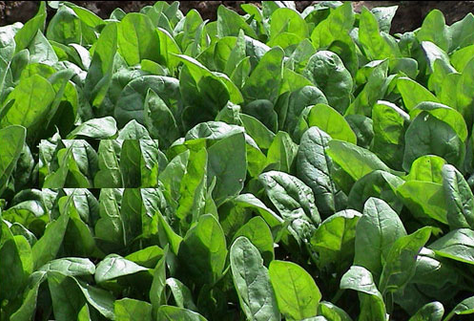Six Tips for High-yield Cultivation Techniques of Spinach in Summer
Cultivation of spinach in summer can regulate the supply of off-season vegetables and achieve higher economic benefits. But spinach is cold and cold, not resistant to high temperatures and glare, how can we plant spinach in the hot season? 1. Choose a variety. Selecting heat-resistant varieties such as K3 and K6 from Dutch Bijiu Co., Ltd., these two varieties can still grow normally at a high temperature of about 30 °C, and can produce 1500-2000 kg per mu of square meters; also have good heat resistance and resistance. Locally good breeds with strong ills such as Shengfeng Pioneer and Accelerated. 2. Scientific land preparation. Apply the base fertilizer first, then turn it over and do it. It is best to adopt ridge cultivation method, which can ensure that the dry energy can be poured, the raft can be arranged, the ridge distance is about 90 cm, the ridge height is about 10-15 cm, and the ridge is planted with 4 to 5 rows of spinach; the spinach grows in the soil at pH 7.3-8.2. Best, if the soil concentration is too acidic, 20 to 30 kg of quicklime can be removed per acre to neutralize. 3. Soil disinfection. In summer, spinach is prone to blight and broken disease in the seedling stage, resulting in dead seedlings and ridges. Therefore, soil disinfection must be carried out first: 2 to 3 days before spinach sowing, using Wufu mixture per square meter (70% pentachlorobenzene) Nitrobenzene mixed with 50% Fumei cream 1:1) or 50% seed dressing double powder 7g, 50% carbendazim, 50% thiophanate, five generations of mixture (70% quintozene and 50% zinc 1:1 mix) 8 ~ 10 grams of the amount, mix 10 ~ 15 kg of dry fine soil into a medicinal soil, before pouring the seedling bed bottom water, apply 1/3 of the soil after the water seepage, sprinkle on the bed, Then sow, then cover with 2/3 of the soil. 4, soaking seeds and germination. When the temperature reaches 30 °C, the spinach seeds are difficult to germinate, and they can be germinated in the well: first soak the seeds with deep well water for 1 to 2 hours, and use the towel after the seeds have enough water. Wrap it up, hang it in the well with a rope (about 1 meter from the surface of the water), wash it once a day in the morning and evening, after 3 to 4 days, when the seeds are white, sow; or lay the seeds on the concrete floor and seed the seeds with wooden boards. Breaking (the force should not be too large when squeezing, hear the cracking sound will pick up the board, flip the seed below and press it, press 3~4 times), then soak it in clean water for 12 hours, pick it up and put it into 2~4°C The refrigerator is kept at a certain temperature and can be sown after being exposed. 5, fine sowing. The direct method can be used to draw shallow trenches about 2 mm deep, so that the seeds can be evenly spread in the ditch, and then scraped with a small wooden board. Always water after the broadcast to keep the soil moist. After the emergence of seedlings, watering and applying nitrogen fertilizer to promote the growth of seedlings is beneficial to the whole seedling. 6. Strengthen the field management. After the emergence of spinach, the water can be properly watered according to the soil moisture, and the ground is always moist. In the period of 4 pieces of true leaves to the group, combined with watering acres, 30 kg of manure is applied for 2 to 3 times; after entering the vigorous growth period, it can also be used. Foliar application of potassium dihydrogen phosphate to promote spinach growth. Spinach should be weakly light, must be shaded, cooled, and protected from strong light, such as covering the sunshade on the shed film. Summer spinach is susceptible to downy mildew, anthrax, scab and viral diseases. Downy mildew can be controlled with 64% anti-virus WP 1500 times. Anthrax can be controlled with 50% carbendazim WP 700 times or 80% anthrax WP 8.0 times. The spot disease can be controlled with 36% thiophanate-methyl suspension 500 times or 40% polysulfur suspension 600 times. The viral disease was controlled with 1.5% phytopathogenic emulsion 1000 times solution. Linaclotide,Teriparatide Acetate,Leuprorelin Acetate,Lypressin Acetate PYSON Co. ,Ltd. , https://www.pysonbio.com